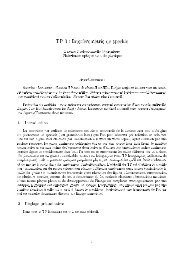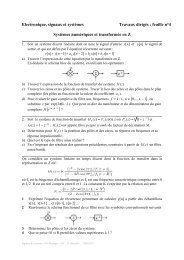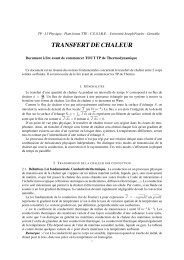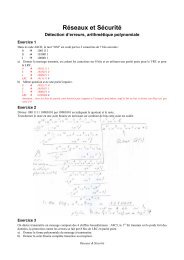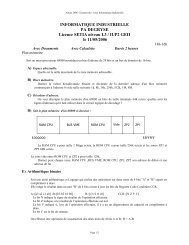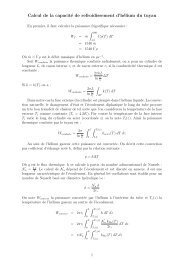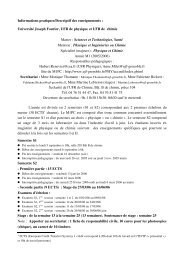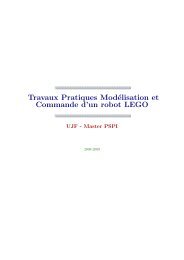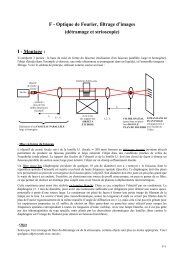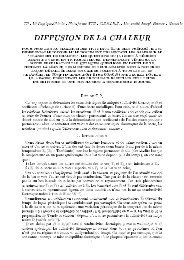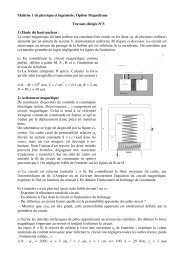Chapter 4 SINGLE PARTICLE MOTIONS 4.1 Introduction
Chapter 4 SINGLE PARTICLE MOTIONS 4.1 Introduction
Chapter 4 SINGLE PARTICLE MOTIONS 4.1 Introduction
You also want an ePaper? Increase the reach of your titles
YUMPU automatically turns print PDFs into web optimized ePapers that Google loves.
100than other plasma characteristic times such as the energy and particle confinementtimes. The radiative loss is also overestimated, since the radiation can bereabsorbed by the plasma. Indeed, the inverse process is used to provide resonantheating of the plasma as indicated by Eq. (4.54).Low frequency limitIt is instructive to show that the low-frequency polarization drift is recovered inthe limit ω/ω c ≪ 1. In this limit, the velocity is expressed by⎛⎜⎝This reduces tov xv yv z⎞⎟⎠ = ±iqmω⎛⎜⎝− ω2∓ iω ⎞0ωc2 ⎛ω c ± iω − ω2⎜0. ⎝ω c ωc2 ⎟⎠0 0 1E x00⎞⎟⎠ exp (−iωt). (4.58)v x = iq −ω 2Emω ωc2 x exp (−iωt)q ∂Ev x î =mωc2 ∂t= ± 1 ∂Eω c B ∂t(4.59)which is the same as Eq. (4.24) with the plus sign for ions and the minus forelectrons. What is the interpretation of the non-zero v y response to the field E x ?Plasma dielectric tensor (no collisions)We may also now derive an expression for the plasma dielectric tensor ↔ ε validat all frequencies (but without the effects of collisions - this is a single particlepicture!) by following the procedure used in the low frequency case. The dielectrictensor is extremely important to an understanding of wave propagation in aplasma.We start with Maxwell’s equation∇×B = µ 0()∂Ej + ε 0∂tConsidering the plasma as a dielectric, we write this as. (4.60)∇×B = µ 0∂D∂t(4.61)




